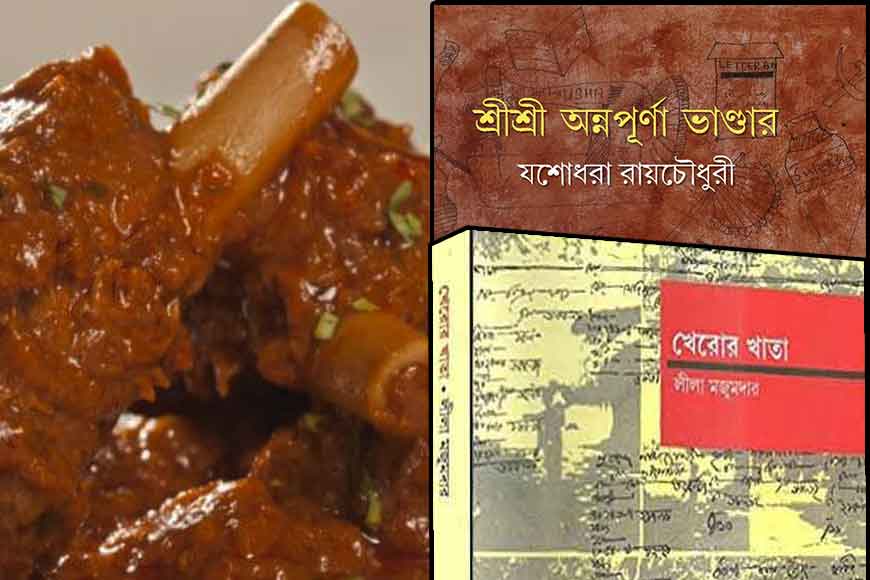This Sunday learn from GB how mutton came on Bengal’s plates

The usual Bengali household swears by mutton. But how did the mutton recipe come on the plates of Bengalis? According to epic Mahabharata, meat is the most delectable, nutritious and indispensable delicacy. At the same time, Maharabharata also says one must reject meat to practice non-violence. In those days non-Aryans had a practice of eating domestic animals like pigeons, ducks and hens. According to Suniti Kumar Chattopadhyay’s Bharatbashir Ahar, one can find the use of spices in meat even in Kautilya’s Arthashastra.
Incidentally, Bengalis have adopted a lot of meat meal preparation from the Portuguese, Dutch, French and the British. We cook rice with meat like the Dutch do. Following the British, we also call our meat edibles chop or cutlet, but when it comes to the process of preparation, we are inspired by the Portuguese. The significance and prominence of mutton is prevalent in Bengali literature too. Biplab Majhi’s Atma Smitricharan brings back fond memories of devouring the good old mangsho bhaat for a Sunday lunch. “The incredible combination of mutton and rice on a Sunday was like the chemistry of Uttam- Suchitra.
Meat for Bengalis always meant mutton for us. There were households where chicken was strictly forbidden. Even if it was allowed, the process of de-skinning the chicken used to take place in the backyards of the houses and women of many households refrained from eating chicken. Be it the spicy red Mutton curry or a light curry with papaya, mutton that sold for just four anas was not a pocket pinch too like these days. Bengalis have a greater fascination towards the left-over mutton. Jashodhara Roychowdhury’s Annapurna Bhandar says, “The older the cooked mutton gets, the taste gets all the more enhanced. This is more a rule of the kitchen Bible.”
It is known that devouring an entire goat was not a huge task for Raja Ram Mohan Roy. Even Swami Vivekananda could easily eat mutton ghugni with four chapatis when he was a child. Chicken had more of a romantic association with the adventure loving Bengalis. People who would venture to Santhali regions, would have wild chicken in pursuit of change of a taste.
Leela Majumdar’s Kheror Khata, narrates a hideous tale of how a man broke the ‘chicken inhibition’ of his domestic help. “He would not touch meat or fish. Even if I cooked it on stove, he would pass offensive comments. One day, I entered the kitchen with two chickens. He was scandalized. I threatened him to cut and cook them. He vehemently refused but eventually, had to succumb to my pressure. I did not say anything more. I thought that he would get accustomed with this process with time. The next day, to my surprise, I found out that he had not only taken the effort of buying chicken and cooking it, but had also kept a little bit of it aside for himself. Never did I ever face a problem with consuming chicken since then.”
The excitement related to preparation of mutton in a Bengali household is well portrayed in Amit Patanayak’s Nonajamin too. “Our happiness knew no bounds when we knew that mutton would be prepared. Mouluddin kaka did not chop the mutton. Baba or any other family member used to do with the help of a ‘katari’. The maid used to mix the spices and marinate the meat. Baba used to cook it with potatoes at night. We used to get impatient with every passing moment. We often dozed off to sleep but the aroma used to keep us going. After the cooking was through finally, we used to sit down to eat. A piece of potato and liver was simply imperative apart from two pieces of mutton. That was enough for us to eat the much-awaited meal with utmost satisfaction.
Chicken might be a widely accepted delicacy today in every household but the glamour, taste and the royal essence offered by mutton was simply unparalleled. The love of Bengalis towards mutton has remained unaltered throughout the ages. Pressure cooker became an indispensable aspect of preparing mutton. The sound of pressure cooker and the aroma of mutton still is an integral part of Sunday mornings. By the very aroma, the entire neighbourhood becomes aware of the whereabouts of your kitchen on that very day. Mutton and rice, of course is a lethal combination every Bengali would die for. But one cannot forget another cult food of Bengalis --luchi mangsho. It is almost like a celebration of the spirit of Bangaliyana. As long as Bengalis continue to exist, our mangsho- bhaat will never lose its significance.









